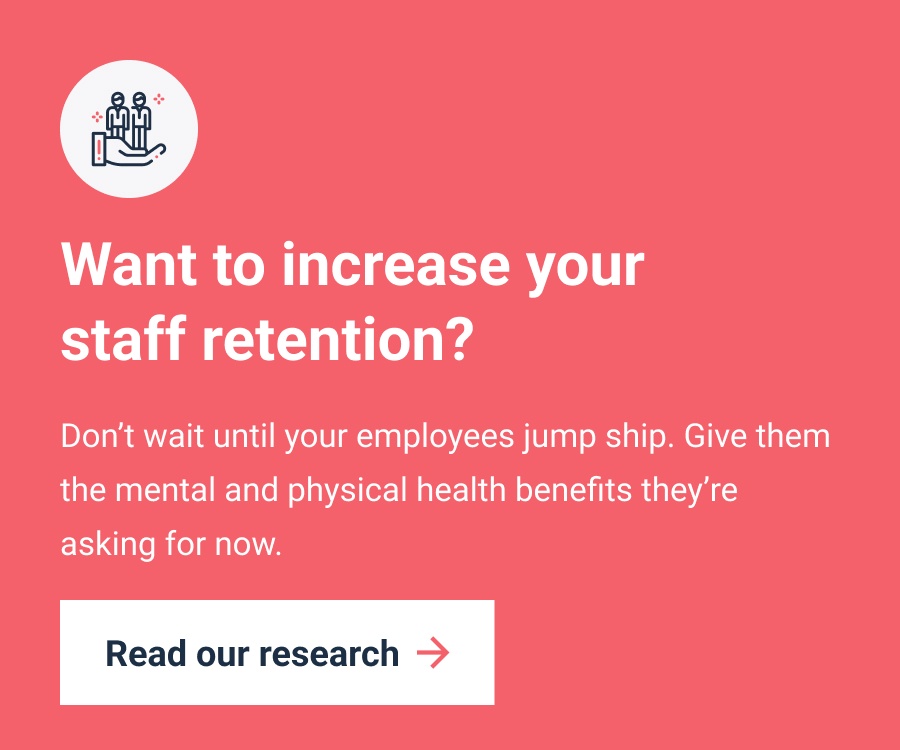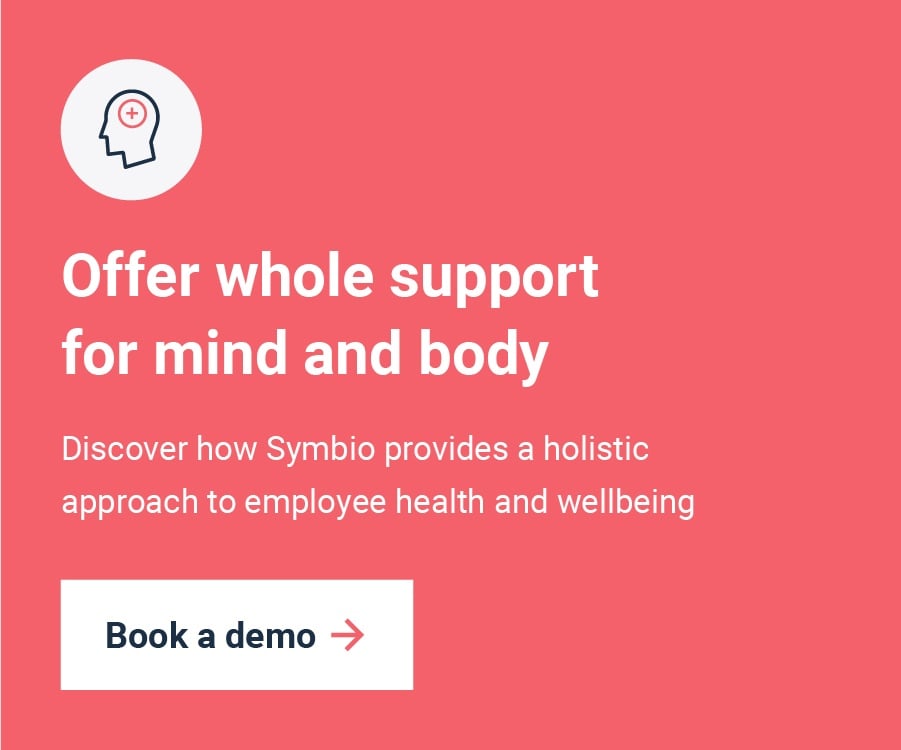1 in 6 workers experience mental health problems in the workplace. Many also suffer from physical conditions, which prevent them working at their best. The UK loses 28.2 million working days to musculoskeletal problems alone, every year.
Yet 46 percent of businesses don’t have a formal wellbeing strategy. As a result, employers are missing out on the benefits of a happier, healthier workforce.
There are big gains you can make from introducing a wellbeing programme in your company. But only if you take time to consider how it's put together. Nobody wants to be hard at work creating a scheme that nobody uses.
Let’s dive into the blueprint of a great wellbeing programme.
What are employee wellbeing programmes?
Employee wellbeing programmes are when a company invests time and resources into maintaining a set of benefits and perks for employees focused on their health and wellness.
It’s completely up to you what your employee wellbeing programme looks like. There’s no prescriptive set of rules or laws with minimum standards. This allows for lots of flexibility but sometimes makes it difficult to know what to include.
A wellbeing programme can be as small or as large as you like. The basics often cover some form of private health insurance and benefits, which you can tailor to your organisation. Other options are fitness memberships, meditation app subscriptions or a cycle-to-work scheme.
Employee assistance programmes (EAPs) are a small, but powerful part of a wellbeing programme. In 2021, nearly 350,000 more people used EAPs than the year before. The service supports employees with work or personal problems; both of which often affect job performance. EAPs can include counselling, debt advice and mental health assessments.
Then you have the less formal, but equally important elements. Yoga classes and inspirational talks can unite colleagues over a common interest and foster a sense of community, for example.
All in all, the best employee wellbeing programmes are holistic. They have a good balance of fun perks and important services that make a difference when times are hard.
The benefits of wellbeing programmes
We spend most of our day at work and many decades in the workforce. That’s why wellbeing programmes are more than a ‘nice to have’ - they’re a promise an employer cares about its employees’ whole self.
While they may take some time to be fully realised, the benefits of these schemes are wide-ranging.
Increased productivity
Employee wellbeing programmes often give employees the toolkits to be more active, energised and focused. This leads to heightened productivity through less presenteeism and long-term absence.
Wellness programmes can encourage workers to reduce smoking, lose weight and build mental resilience. As a result, their overall wellbeing and productivity improve.
27 percent of businesses with a wellbeing strategy reported increased productivity, motivation and employee engagement.
Save money
With a healthier and fitter workforce in your company, your employees will take fewer sick days and decrease presenteeism. And digital medical services, like online GPs, helps staff spend less time out of the office at appointments. And these small benefits soon add.
Each wellbeing programme’s ROI will depend on what you implement. The RAND Wellness Programs Study found, with its sample, that the overall return was $1.50 for every dollar spent.
Higher retention rates
Motivation and engagement often increase when workers feel looked after by their employer. This is especially so when employees help to shape the wellbeing programme. And employers are taking notice.
In the latest CIPD Resourcing and Talent Planning Report, 33 percent said they had made pay and benefits more competitive.
Better reputation
A job is much more than a salary. For Gen Zs and millennials, nearly a quarter (23 percent) of each age bracket said a positive workplace culture was why they chose to work for their current company.
A wellbeing programme is about more than attracting new talent though. Establishing a holistic wellbeing programme shows existing employees you care about their health. In turn, they feel a greater sense of loyalty and belonging to the organisation. And that's the foundation of a great workplace.
How to ensure your wellbeing programme is a success
If you’re looking to start a programme for your company, take a step back to think about how it will work in your organisation.
Every company is different. Your wellbeing programme should work for most employees, with regular review and feedback.
Talk to your workforce
Introducing ‘free pizza Fridays’ and thinking the job is done might cause some grumbles in the office. Get your employees involved in what the wellbeing programme should include. And make sure you value their opinions. This will help engagement and uptake on the programme itself.
Your employees could weigh in on what type of benefits would work and how they’d like to get them. Ask your comms team to get involved: they can help shape the messaging and arrange surveys, so you can get a wide range of responses across your business.
Wider support
Is it important for your employees to have family and loved ones who can access the employee wellbeing programme? If so, does your plan allow for this extra support?
This is often dictated by age: younger colleagues won’t find family plans as valuable, whereas older colleagues may want to include their spouse or children on their insurance.
Clinical validation
Your employees will want to know a trusted service or medical professional handles their health and wellbeing. Hiring someone you’re sure is reliable is a key factor.
When speaking to a wellbeing programme provider, ask questions about why they’ve partnered with a certain provider.
Our healthcare suppliers, for example, are fully vetted and qualified, with years of experience, so you know you’re getting the best person to look after your staff.
Ease of access
Having a mix of in-person and online support is vital, especially in a hybrid working environment. Sensitive services like counselling or bereavement talks could be available face-to-face, over the phone or over chat.
The easier the programme is to access, the more use it will get - apps, websites and online portals are all options you can implement. Our wellbeing app, Symbio, keeps everything in one place for easy access and a streamlined employee experience.






